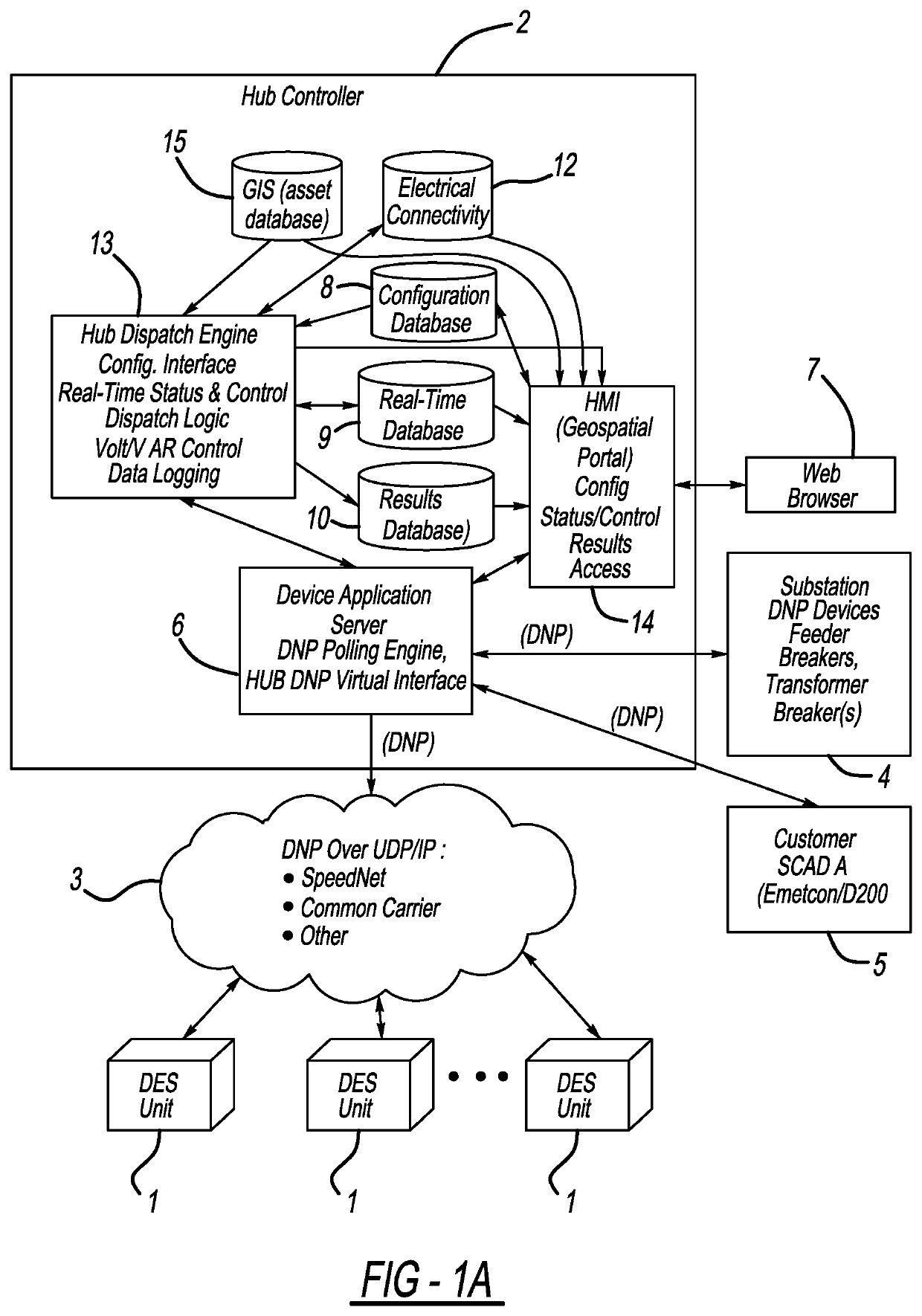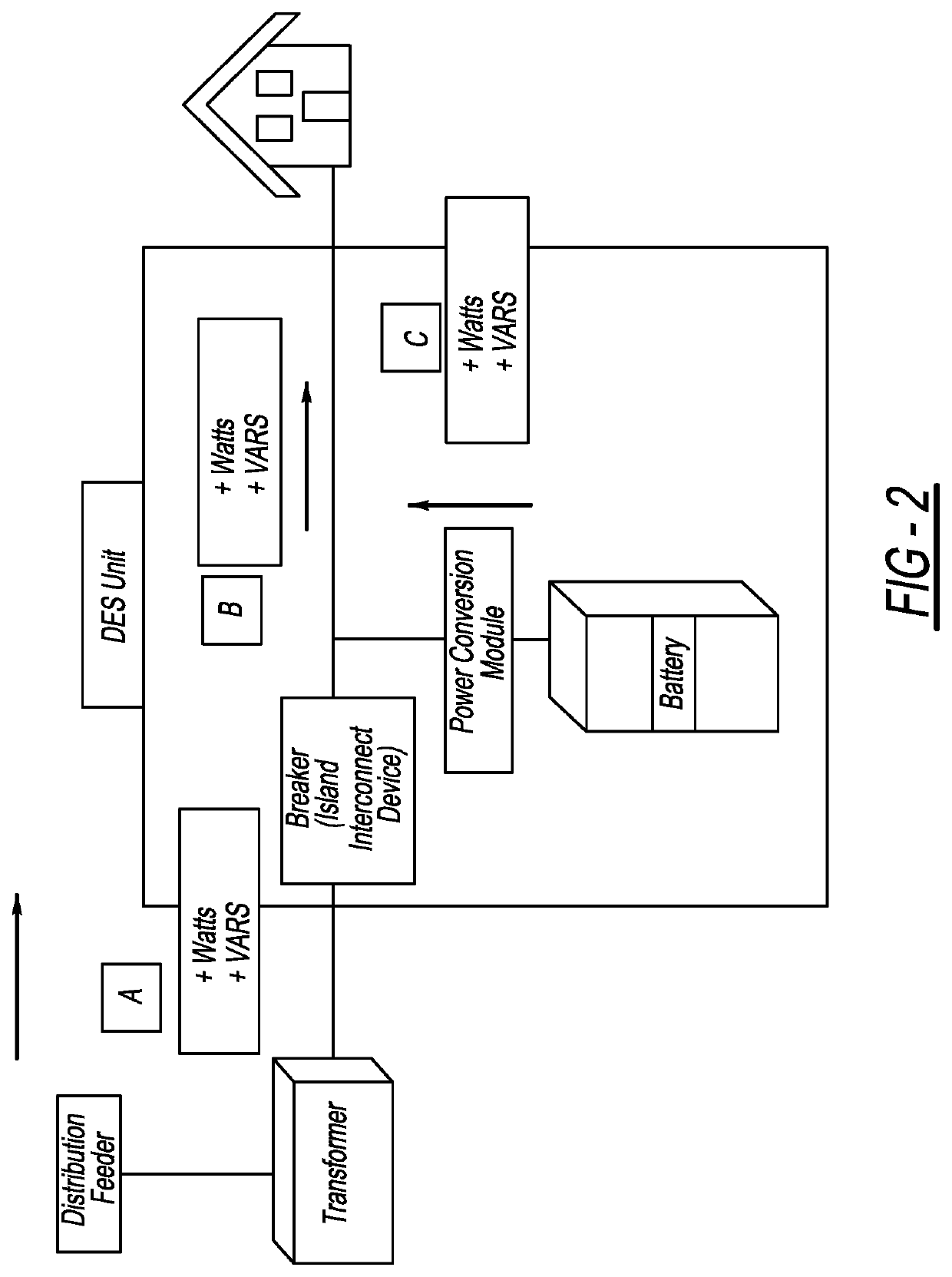Method to detect utility disturbance and fault direction
a utility and fault direction technology, applied in the direction of computer control, ac network load balancing, instruments, etc., can solve the problems of inability to meet other important capacity constraints in the distribution grid, inability to leverage des to meet other important capacity constraints, and high cost of transformers in these substations. to achieve the effect of facilitating the connection of various renewable energy sources
- Summary
- Abstract
- Description
- Claims
- Application Information
AI Technical Summary
Benefits of technology
Problems solved by technology
Method used
Image
Examples
Embodiment Construction
[0034]An embodiment of a DES system is shown in FIG. 1a. Connectors depicted in the drawings indicate information exchange between components. The DES units (1) are assembled or prepackaged components or boxes including energy storage modules (batteries in the present system). The system could use virtually any form of energy storage, including kinetic, capacitive, chemical, etc., as long as it is locally-convertible by the unit to electrical energy on demand. The DES units also include a four-quadrant inverter and digital computer-based control with the ability to communicate to the outside world. The present units utilize the open standard DNP3 communication protocol to communicate to the Hub Controller (“Hub”) (2) although modern computer technology provides a wide variety of application protocols that could be used. Since the DES units are dispersed over a wide geographic area, a radio communication system (3) is preferentially utilized to facilitate the information exchange wit...
PUM
 Login to View More
Login to View More Abstract
Description
Claims
Application Information
 Login to View More
Login to View More - R&D
- Intellectual Property
- Life Sciences
- Materials
- Tech Scout
- Unparalleled Data Quality
- Higher Quality Content
- 60% Fewer Hallucinations
Browse by: Latest US Patents, China's latest patents, Technical Efficacy Thesaurus, Application Domain, Technology Topic, Popular Technical Reports.
© 2025 PatSnap. All rights reserved.Legal|Privacy policy|Modern Slavery Act Transparency Statement|Sitemap|About US| Contact US: help@patsnap.com



